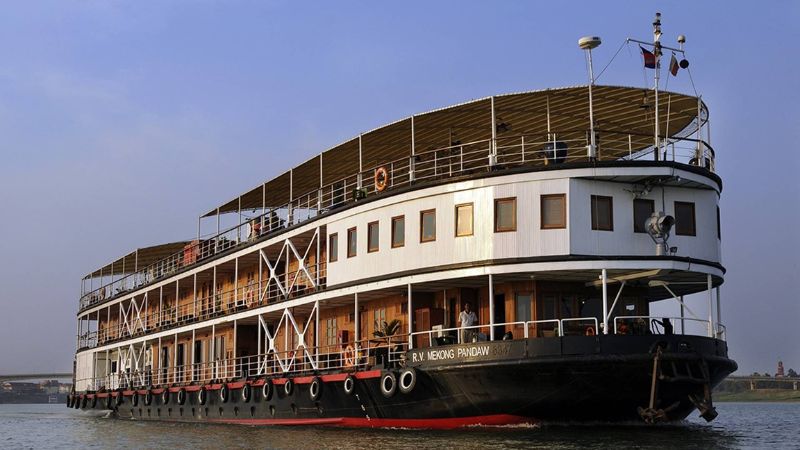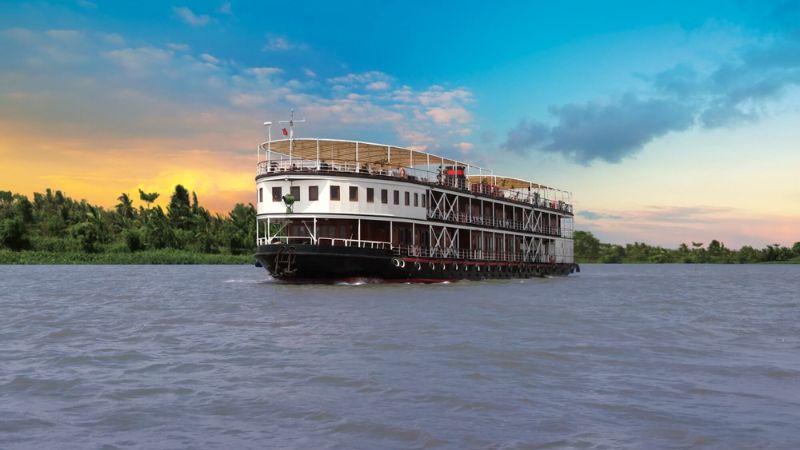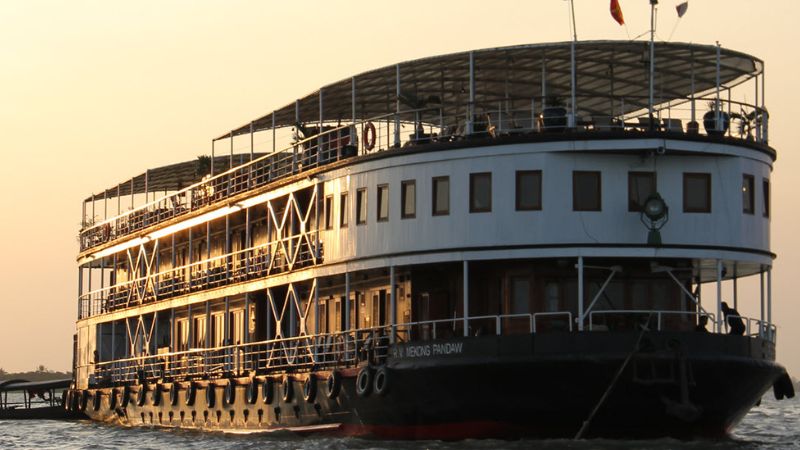Siem Reap is one of Cambodia’s northwest provinces, located 314 kilometers from Phnom Penh along National Road 6. This province has a population of about 1 million people and is growing at a rate of about 2.5% per year.
General Information
Siem Reap, Cambodia’s unofficial tourism capital, is home to hundreds of natural and man-made attractions, including breathtaking temples, well-preserved colonial buildings, one-of-a-kind museums, cultural theme parks, expansive lakes, and verdant mountains. In the Old French Quarter and around the Old Market, Siem Reap has French colonial and Chinese-style architecture.
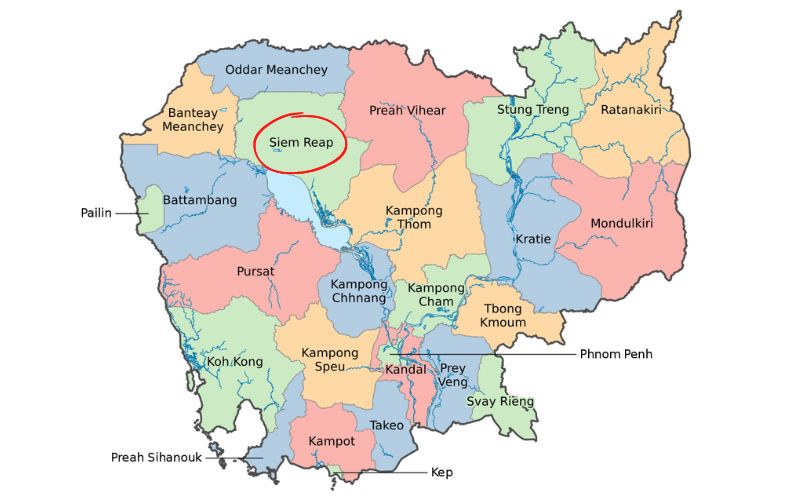
Siem Reap location
This is a happy city that welcomes visitors like old friends. From the ninth to the fifteenth centuries, this region was the site of successive Khmer Empire capitals. The Angkor Archaeological Park, which includes the ruins, is about four miles north of the city center.
Weather and best time to visit
The climate in Siem Reap is tropical, with seasonal variations that are typical of Cambodia. The dry northeast monsoon season lasts from December to April, while the southwest monsoon brings rainy days and high humidity from May to November.
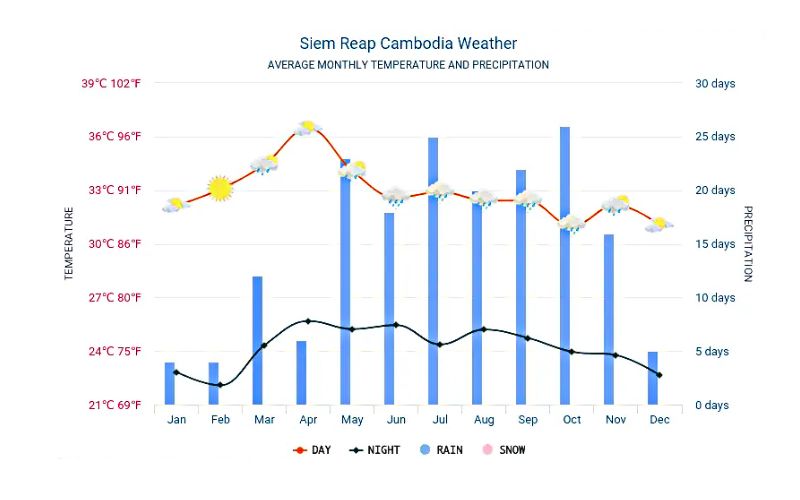
Siem Reap weather
In April and May, Siem Reap can get extremely hot, especially in May.
There will be a lot of rain from June to November. However, this is not a bad time to visit Siem Reap because the temples are less crowded and the surrounding tropical landscape is lush and green. Bring an umbrella, but the rain usually falls in brief showers with moments of bright sunlight, allowing you to capture some great shots of Angkor Wat and beyond.
The best months to visit Siem Reap are December and January when the days are almost always sunny and dry. Just keep in mind that this is peak tourist season, so everything will be more crowded and prices will be higher.
Getting to Siem Reap
Depending on your budget and travel plans, there are a few different ways to get to Siem Reap. As Cambodia’s second-largest city and the gateway to Angkor Wat, it has various facilities to satisfy all kinds of visitors. Whether you want to fly internationally to Siem Reap, or domestically from Phnom Penh or another city in Cambodia, there is bound to be an option for you.
Most visitors to Siem Reap arrive by plane from Phnom Penh or Bangkok. Singapore, Ho Chi Minh City, Kuala Lumpur, and Vientiane all have regular flights.
Furthermore, buses and minivans operate almost continuously in Siem Reap. It is the most popular way for those on a tight budget to reach the city of Phnom Penh. There are daily boats and buses/vans from Phnom Penh to Siem Reap.
Furthermore, during the right season, you can travel by boat from Phnom Penh to Siem Reap! The boat will take you up the river to the lake and all the way to the beach near Siem Reap.
Although it may appear strange, you can hire a taxi from Phnom Penh. This a fantastic but more expensive option, so consider our service here.
Getting around Siem Reap
Because Siem Reap is a small city, getting around is simple, with the majority of the best sites within walking distance. While walking is the most convenient way to explore the historical town, local transportation options such as tuk-tuks, motorcycle taxis, and bikes are available everywhere at reasonable prices.
There are mid-range and luxury hotels that provide airport transfers, and minivans, buses, and motorbike taxis are available at the arrivals gate. Meanwhile, the Angkor Archaeological Park is about 6 kilometers from central Siem Reap. Its iconic temples can be explored on foot, by bicycle, or even in eco-friendly electric cars.
Where to Stay in Siem Reap
In Siem Reap, there are numerous places to stay. You could stay in one of five areas in Siem Reap: the French Quarter, the Old Market, Wat Bo, Taphul Village, or along Charles de Gaulle Boulevard. There are many low-cost hostels available, as well as other excellent options such as traditional homestays, villas, and even high-end hotels and resorts.
Best places to visit & things to do in Siem Reap
Angkor Archaeological Park
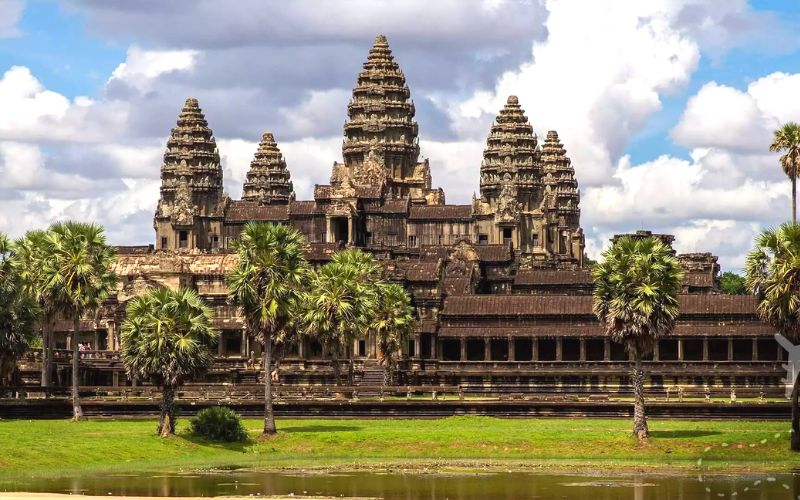
Angkor Archaeological Park
Between the 9th and 15th centuries, a succession of kings built the vast ancient city that sprawls across Angkor Archaeological Park. It has hundreds of temples. Even after multiple visits, you’ll feel as if you’ve only barely touched the surface. This was the world’s largest city during the medieval period, but only the temples remain today.
Siem Reap’s Markets
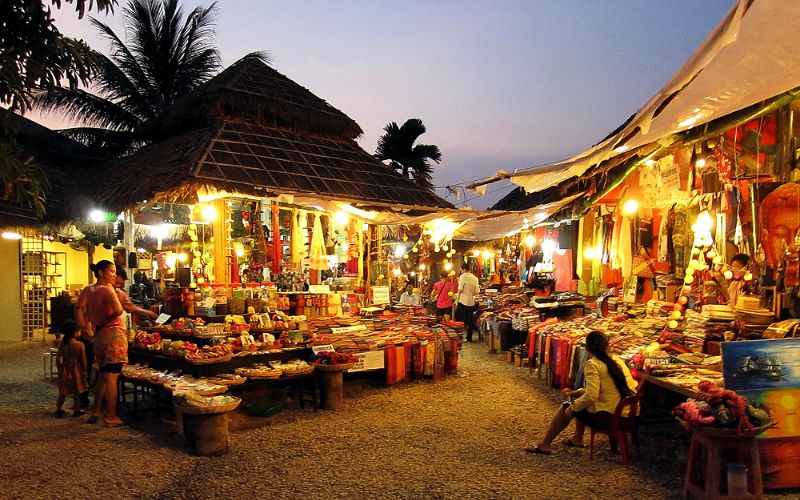
Siem Reap Markets
The Old Market (Psar Chaa) in Siem Reap is one of the most central market areas. It sells everything from fresh produce to low-cost clothing to stone and wood carvings. Although much of the craftwork here is of poor quality, it is still enjoyable to browse. Another market not to be missed is the Angkor Night Market. It is usually open from late afternoon until midnight. There’s a lot of local craftwork for sale here, from silk scarves to silver jewelry.
Banteay Srey Butterfly Centre
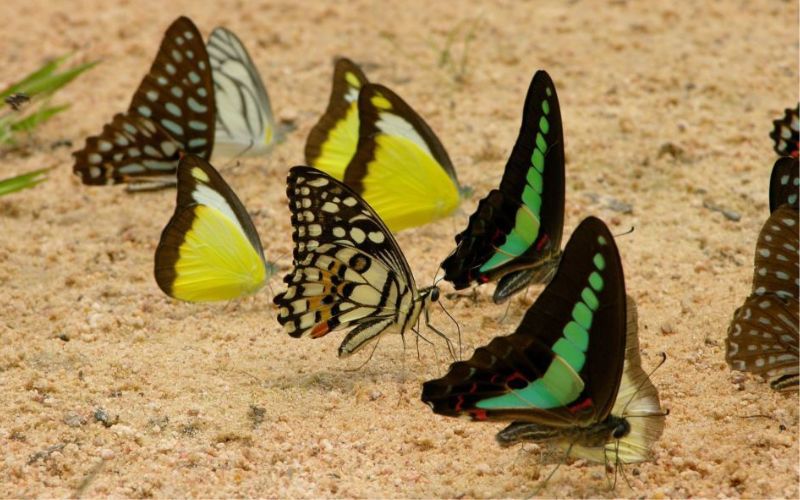
Banteay Srey Butterfly Centre
This is the largest butterfly enclosure in Southeast Asia, with thousands of endemic butterfly species fluttering freely around lush, enclosed tropical gardens. There is nothing like a trip to this natural oasis to break up all the temple-hopping activity, especially for families with young buddings.
Phare Ponleu Selpak
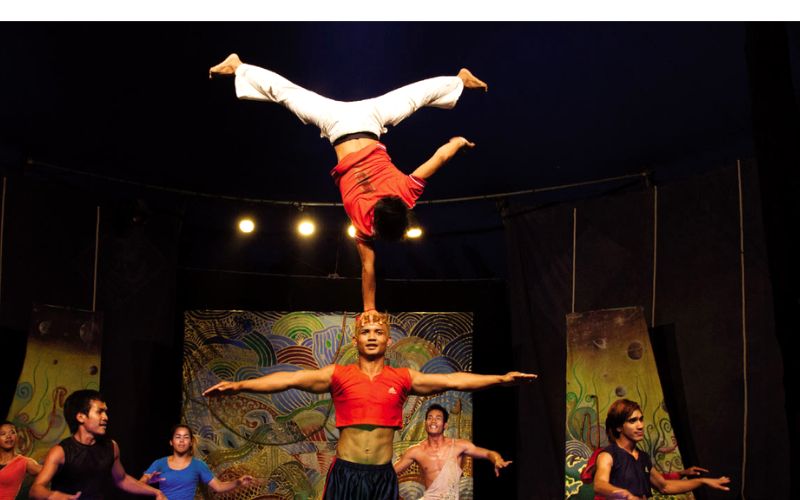
Phare Ponleu Selpak
Cambodia’s acclaimed circus, Phare Ponleu Selpak, is a dazzling spectacle combining acrobats, music, dance, circus slapstick, acrobatics, etc. This is a modern circus in the style of Canada’s famous Cirque du Soleil. The artists weave a story through the performance, combining drama and comedy into one show.
What to eat & drink in Siem Reap
Bai Sach Chrouk (Pork with Broken Rice)
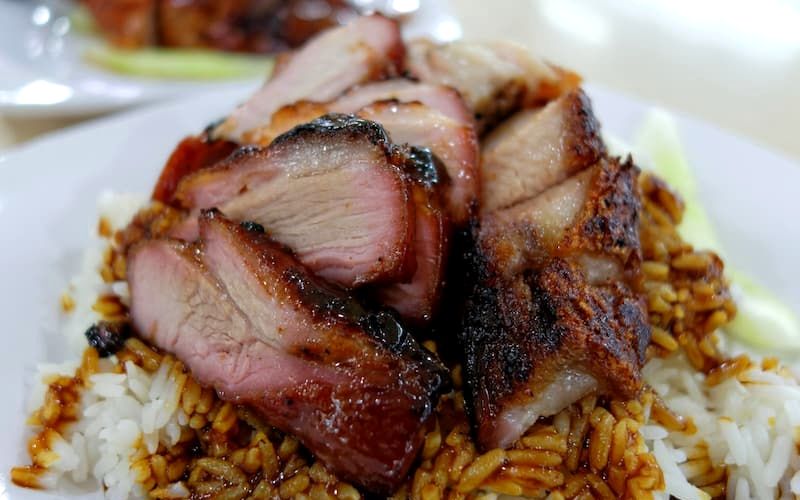
Cambodian cuisine – Bai Sach Chrouk
This popular Cambodian dish consists of juicy pork slices, scrambled eggs, and rice. The dish is traditionally made with raw pork that is slow-cooked over a charcoal stove. Several Khmer restaurants also dip the meat in coconut milk or garlic to add flavor. After cooking, the pork is thinly sliced and served with broken rice, sliced scrambled eggs, pickled cucumbers, and daikon radish. Bai sach chrouk is also served with a bowl of chicken broth, scallions, and fried onions.
Lok Lak (Stir-Fried Beef)
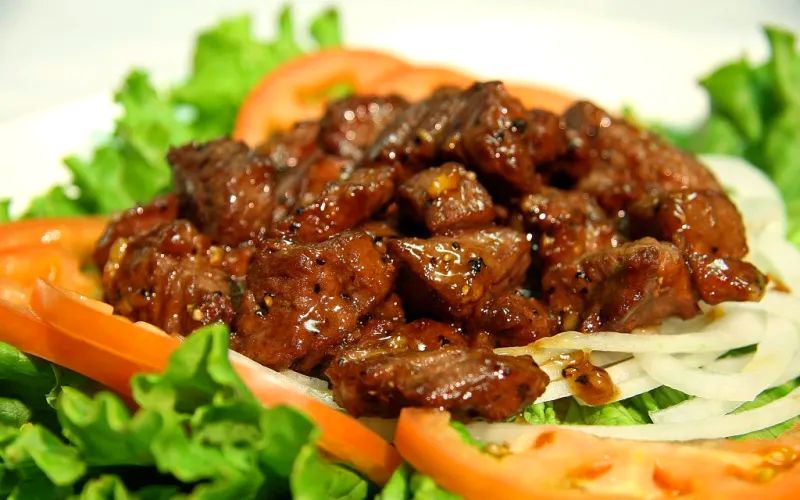
Cambodian cuisine – Lok Lak
The preparation of Lok lak, or stir-fried beef, varies by cook. It is typically served with fresh lettuce, tomato, red onion, and cucumber slices. The meat is marinated overnight in a unique blend of fish sauce, soy sauce, lemon, pepper, and oyster sauce to produce its distinct flavor. If you don’t like beef, you can easily substitute venison, pork, chicken, or even tofu.
Khmer Red Curry
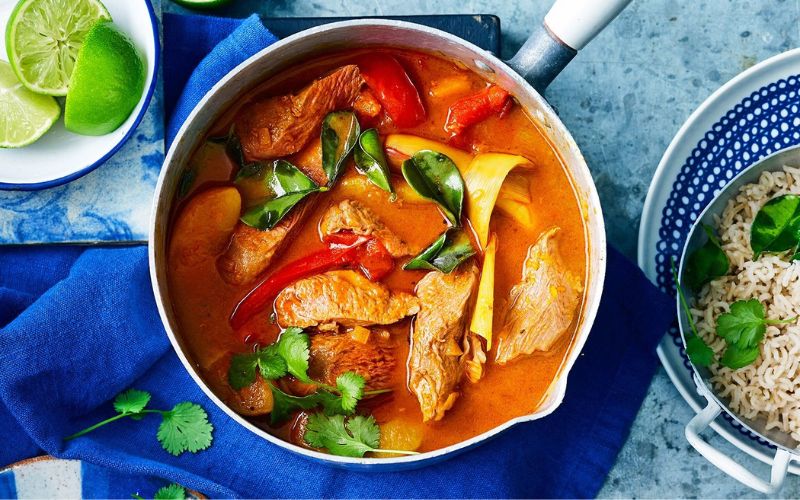
Khmer Red Curry
Despite its vibrant color, Khmer red curry contains no chili, making it a much milder version of traditional Thai and Indian curries. This coconut milk-based dish uses kroeung, a Khmer curry paste made with lemongrass, galangal, kaffir lime zest, and turmeric so it is ideal for those who cannot tolerate spicy food. It’s traditionally served with a French baguette and includes meat slices (beef, chicken, or fish), eggplant, green beans, and potatoes.
Khmer Cakes
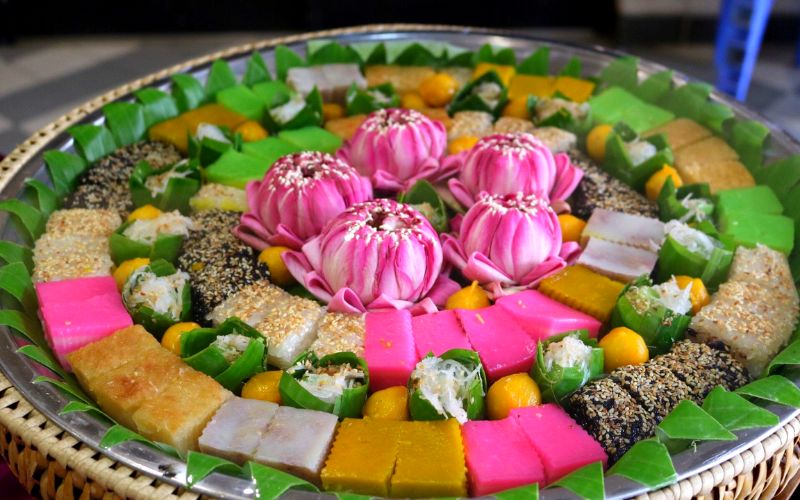
Cambodian cuisine – Khmer Cakes
Khmer Cakes are the perfect balance of sweet and savory. These delectable cakes are made with mung beans and taro and topped with fruit preserves for a touch of sweetness. Khmer Cakes are popular not only among locals but also among visitors to Siem Reap, who describes them as a perfect balance of sweetness that should not be missed.
Samlor Machu Kroeung
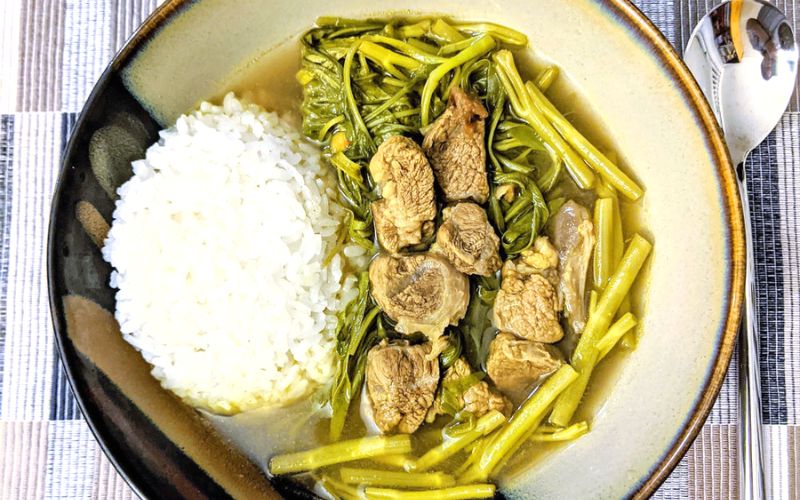
Cambodian cuisine – Samlor Machu Kroeung
Samlor machu kroeung is a sweet and sour soup that is typically served for dinner. This dish features diced beef ribs and succulent tripe stewed in kroeung paste, lemongrass, turmeric, morning glory, and coriander leaves. Peanuts are sometimes also added to the mix, giving it a tangy and nutty flavor.
Prahok
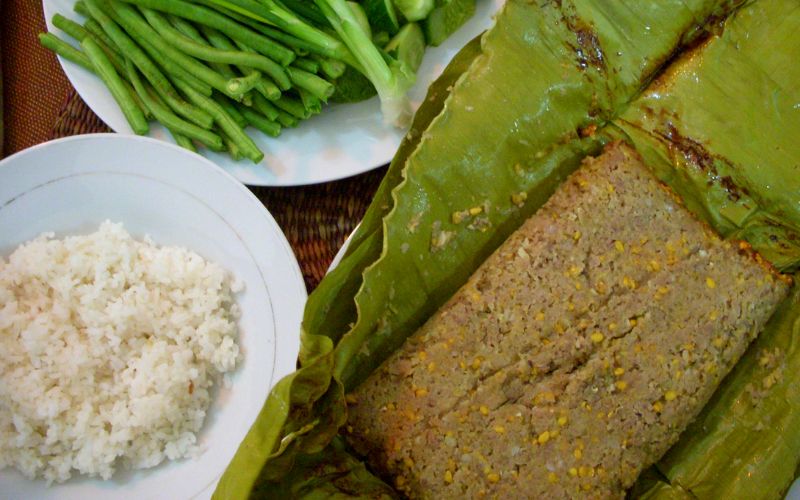
Cambodian cuisine – Prahok
Phahok is Cambodian traditional fermented fish paste. It is created by first exposing the fish to sunlight for about a day. Therefore, this allows the fish to dry out and the fermentation process to begin. The fish is mixed with sugar, garlic, and cold rice after a day. The Prahok is ready to ferment once everything has been thoroughly combined. finally, the mixture is placed in a jar and left for several months before being ready.
Travel tips
- Hire a tour guide for at least one day
- Haggle for souvenirs
- Stay in a central location
- Avoid getting a fish massage
- If you want to see the sunrise or sunset, bring a torch
We hope the information in the article “Siem Reap travel guide” will be helpful to you. If you want to have more information and ideas to build an unforgettable itinerary in Siem Reap, do not hesitate to contact us!
Start planning your tailor-made tour with 1-1 help from our travel advisors.
- Plan your tailor - made trip with a local expert
- Book securely with money-back guarantee
- Travel stress-free with local 24/7 support

